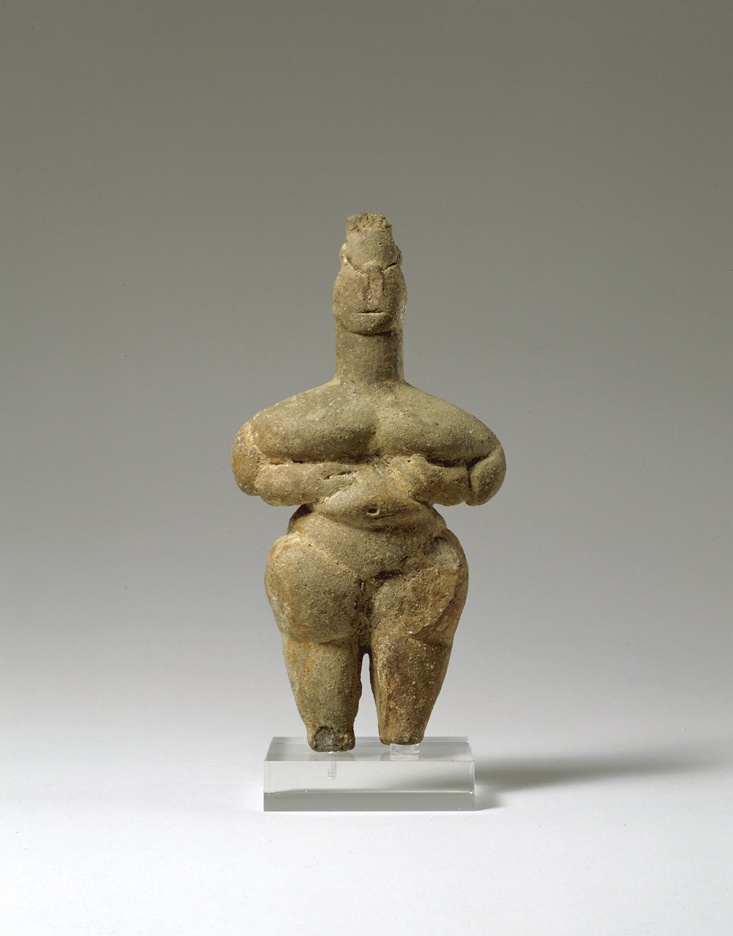
Terracotta
H: 13.7 cm
From Thessaly (between Volos and Lamia) - found in a well
Early Neolithic
6th millennium B.C. [1]
Modelled with the help of a spatula-type instrument.
Condition: greyish green clay with faint traces of white clay slip with various discolourations due to exposure; whether the black discolouration was caused by fire or not is uncertain. Slight chippings to the top of the head, front of the right foot and damage to the front of the left thigh.
Very carefully executed; note such details as the fleshy folds on her back and her right hand resting on top of her stomach, whereas the left hand appears to be drawing attention to
her bosom.
The space between the legs is fairly uncommon, as is the representation of painted locks visible on the left side of her face and neck.
Her extraordinary presence testifies to her being a representation of a goddess.
Exhibited and Published:
Meisterwerke griechischer Kunst, cat. no. I 1, p. 110 ill.
Kunst der Kykladen, cat. no. 11, pp. 421, 214 ill.
Mentioned:
Buchholz, H.G., Karageorghis, V.: Altägäis und Altkypros (Tübingen, 1971), pp. 95-96.
1 Faced with this Neolithic section, entries 42-46, the author, somewhat unsure of his dating, in view of the divergence of opinion in various publications, and wishing to approach the truth in the measure of the possible in order to advance knowledge, consulted Colin Renfrew, explaining what precedes. Unfortunately he declined to help on the ideological grounds of what the Americans call "political correct thinking"; in this he has been joined by Lauren E. Talalay whom we consulted as a last resort. We had previously consulted Saul Weinberg who very kindly replied but we have preferred to follow Miss Amy Raymond's slight modification of our dates, for which we would like to thank her.